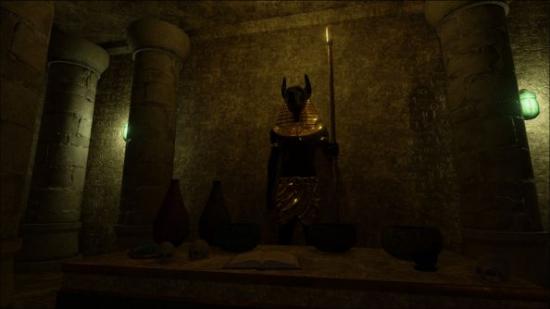Game development is tough – but it’s common to hear developers whistle wistfully about how much tougher it used to be. Thanks to the rise of commercial engines, tasks that traditionally required a lot of coal-shovelling have become like maglev trains, whisked magically along by streamlined software.
But from a lay perspective, it’s hard to quantify what’s changed. So here’s an example of what modern game engines have meant for two specific developers – Dan and David Thompson, making their first-ever 3D game in the mould of Amnesia.
“Our choice of genre wasn’t very smart,” said Dan, of Aegon Games. “In fact, it was probably one of the worst genres we could have picked. The game is art-heavy, and we don’t have an artist. The game is story-heavy, and we have no writing experience. It’s a single player game with no replayability, which means a lot of hand-crafted content had to be made by a two-man team. We definitely weren’t playing to our strengths.”
And yet there it is: finished, named Astray, and quite nicely reviewed on Steam. How did it happen?
The Thompsons imagined a short but varied sojourn in the English countryside of 1909, where players would find an abandoned museum dedicated to the supernatural.
“We wanted to avoid modern technology and instead have the museum set in a rural area of a less ‘connected’ society,” said Dan.
They would avoid horror-cliché hospitals to explore another kind of public building – one they felt could be equally eerie in its emptiness. The exhibits would provide environmental variety, and the chance to imprint the personality of an absent curator on their levels. As the curator’s nephew, it would be the player’s job to plunge the depths of the building, picking through their relative’s idiosyncratic puzzles in tactile first-person.
Though events do eventually take a turn for the otherworldly, it’s a grounded premise with a whiff of Arthur Conan Doyle or Agatha Christie about it.
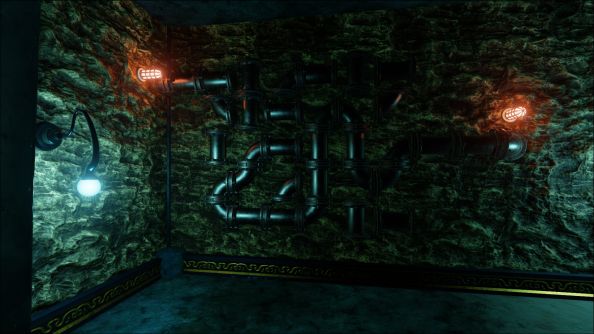
“Things that are too alien or have no basis in reality would be less immersive and we felt that there needed to be some sense of familiarity to establish the atmosphere we were going for,” said Dan. “We wanted a more subtle horror game with small abnormalities and unnerving situations rather than going all-in with the supernatural theme.”
The mechanics, too, would root Astray firmly in reality. The Thompsons decided their game would exploit a physics-heavy interaction system like that used in Amnesia. Dan takes inspiration from a particularly stressful gate-opening sequence in Frictional’s groundbreaking horror game – played out as an unseen monster splashes about in knee-deep water nearby.
“There’s no ‘click to perform action’ going on there,” he said. “There’s a real interaction with the game world that feels weighty and deliberate. Sometimes it feels a little ‘clumsy’ to handle objects; not enough to make it frustrating, but enough to make situations in which you need to act quickly more tense.”
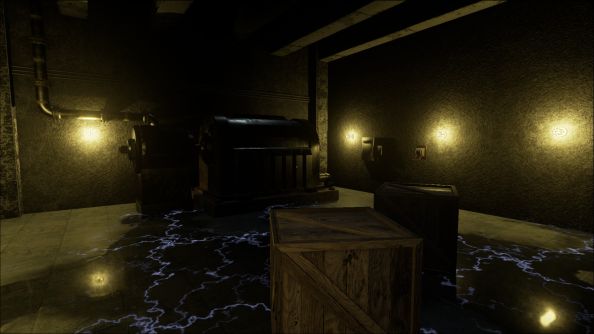
With the precepts of the game decided, the Thompsons set about putting it together in Unreal Engine 4. The interaction system was built in Blueprint, UE4’s simplified scripting tool, which turned out to be a neat puzzle assembly kit – allowing the brothers to connect objects to specific tasks the player would perform.
Despite Dan’s BSc in Computer Games Programming, he found it quicker and easier to build the majority of the game in Blueprint – a decision which also enabled David, a designer, to prototype new ideas of his own.
Inevitably, though, there are problems that turn up when two young men decide to make something like Amnesia as their first 3D game. The amount of art necessary to fill out the museum was more than the pair could realistically create, leaving some wings of the building somewhat bare. But creative use of the tech lessened the damage: in an off-limits part of the museum, the brothers applied a cloth simulation to primitive shapes – lending the impression of covered artifacts.
The engine helped overcome manpower problems elsewhere, too, accommodating the Thompsons in areas like material editing and AI – fields they’d never have had time to build tools for themselves.
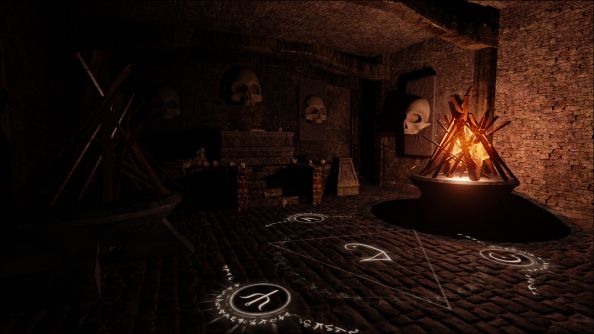
“That’s not to say that it was quick or easy,” said Dan. “But we’d still be making it now if we had to build the engine from scratch as well.”
As it was, Astray took seven months to make – just four more than the Thompsons had spent on their last game, casual platformer Trave. And in the end, one of its biggest issues couldn’t be solved by any amount of engine streamlining.
“We didn’t anticipate how much of a problem it would be to make a game that supposed to be scary,” said Dan. “It’s difficult to be scared of something when you know everything about it, so we had to feign ignorance of the scares and imagine what the player would feel in a given situation. That wasn’t easy.
“It was especially stressful towards the end of development when we looked back at the game wondering ‘Is any of this even scary’?”
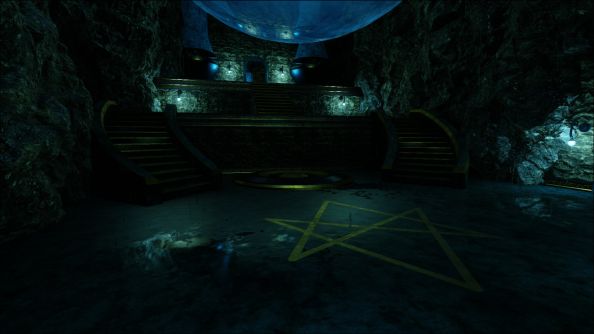
The finished Astray was supposed to be five or six hours long – it’s only about half that. But players on the whole have been convinced by its scares, and by Prof. Walker’s Museum of the Supernatural. Most of the criticisms align with the Thompsons’ own: Astray is too short, sags toward the end, and a little lacking in the AI department.
“Honestly, I’m fairly proud that we finished the project at all,” said Dan. “We definitely weren’t playing to our strengths, but now that we’ve done it, we’re feeling pretty confident about our next project.”
Astray is available on Steam. Unreal Engine 4 development is now free.
In this sponsored series, we’re looking at how game developers are taking advantage of Unreal Engine 4 to create a new generation of PC games. With thanks to Epic Games and Aegon Games.
